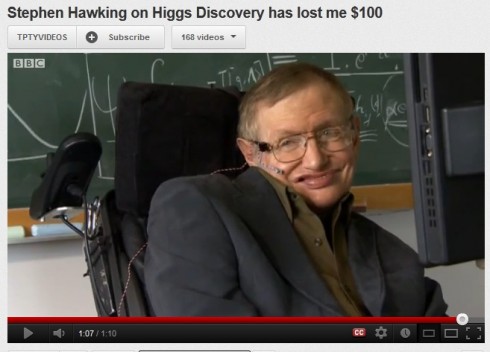Explaining the Higgs, or not…
The Higgs particle is barely three weeks old (the baby photos are already up), and one of the hazards of being a particle physicist is that people will ask you to explain what the Higgs particle is. So I issued a challenge on our Facebook page for the best Higgs explanations. Here are my personal favorites:
1. The gentle start – an Official FermiLab video provides a very nice explanation. (I’m actually at FermiLab for the next few weeks, so I may be a little biased.) This is called “What is a Higgs Boson?” by Don Lincoln
2. The lunchtime chat – a video from PhD Comics (required reading for anyone thinking about grad school) with terrible sound quality, since it was literally recorded in the crowded CERN cafeteria at lunch, but cool animations called “The Higgs Boson Explained”.
3. Fun, Short AND Technical – If you’ve made it this far, head over to Minute Physics and check out part 1 of a fantastic but slightly technical video series on “The Higgs Boson“. I really like the motivation here for introducing spontaneous symmetry breaking, so this is the explanation I usually give to physics majors. Incidentally, part 2 brings in some more interesting issues, so it’s nice but not required.
4. How to Ruin Your Afternoon – If you’re yearning for theoretical minutiae, you can’t do better that Matt Strassler’s blog. What I admire/fear about his Higgs explanations for the general public is that he refuses to gloss over any aspect, no matter how technical it may be. Read through the “Higgs FAQ 1.0” and keep going with his other posts for an informative way to annihilate your afternoon.
Finally, I love the “Craziest Higgs Stories” by Hank Campbell for the failed attempts at reporting on the Higgs. Time travel, teleportation, disproving religion, you betcha! Behold what passes for journalism these days.
Got something better (or worse)? Pass it along.
-Dr. D






